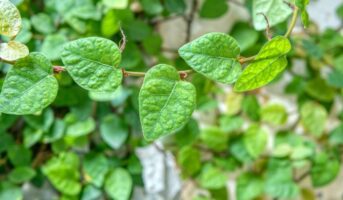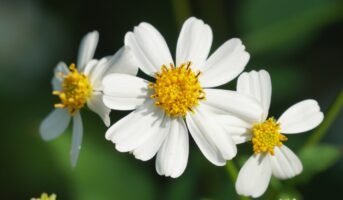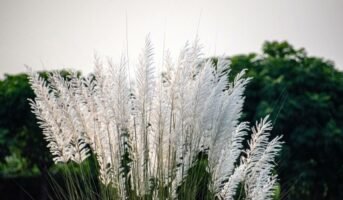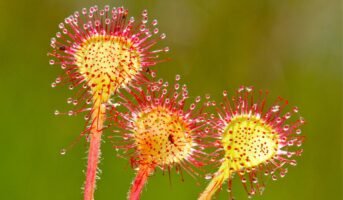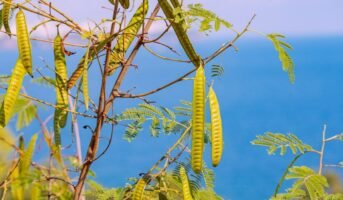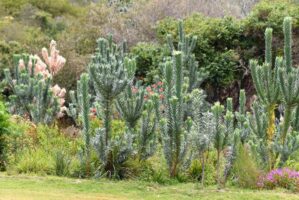Banana is one of the favourite fruits worldwide, which comes under the genus Musa and family Musaceae. It is cultivated as a significant fruit crop. People have used bananas since the olden days because of their substantial nutritional value and sweet taste. It is consumed raw as well as in desserts.
As banana is a rich source of carbohydrates, potassium, vitamin B6, vitamin C, etc., it is also known as a must-have diet food. This article will discuss more details about the banana and the banana tree.
See also: How to grow Grapes in your garden?
Banana tree: Key facts
| Botanical name | Musa sp |
| Family | Musaceae |
| Plant type | Herb plant with succulent stem |
| Native | tropical portions of India, Southeast Asia and northern Australia |
| Leaf type | long, a tube-like structure called a sheath, a stout petiole |
| Flower Characteristics | Hermaphrodite flowers |
| Varieties available | Musa acuminata, Musa balbisiana, Musa paradisiaca, etc. |
| Height | 5 m (16 ft) |
| Season | All year round |
| Bloom time | All year round |
| Sun exposure | 7 to 8 hours of direct sunlight every day |
| Ideal temperature | 25°C -30°C |
| Soil type | Alluvial and volcanic soils |
| Ideal location for placement | Garden area where direct sunlight comes |
| Maintenance | ● 7 to 8 hours of direct sunlight every day
● Well-drained water system is required |

Source: Pinterest
Banana tree: Physical description
The banana tree is known as a gigantic herb. The botanical name of the banana tree is Musa sp. However, there are a few varieties like Musa acuminata, Musa balbisiana, Musa paradisiaca, etc. It is grown from an underground stem which is called a rhizome. A fully grown banana tree usually has 10 to 20 long leaves. Leaves are elliptic leaves that can be 3 metres long with a breadth of 26 to 20 inches.
In the banana tree, you will find the flower spike consisting of many banana flowers. A long bract covers every flower. Usually, 16 to 20 flowers create a group under every bract. When fruits are grown from a bunch of flowers, it creates a cluster of bananas, where 16 to 20 bananas are available.
Banana leaves are also an essential part of the tree that humans have used as a food plate for ages.

Source: Pinterest
Banana Tree: Varieties
There are roughly 70 species and even more varieties of banana trees, including:
There are around 70 species and even more varieties of banana trees. These include:
- Musa Acuminata: This species can grow up to 12 to 20 foot tall and is often cultivated for its decorative foliage. It features paddle-shaped leaves that can reach lengths of 6 to 10 inches.
- Musa Ornata: Commonly known as the flowering banana tree, this species is primarily grown for its ornamental value. While it produces small fruit, it is not typically consumed.
- Musa Basjoo: Referred to as the Japanese banana, this species exhibits good cold tolerance and can reach heights of 6 to 14 foot. It is favoured for its ability to withstand colder climates.
Banana tree: How to grow?
To plant banana trees, you must keep an eye on the temperature and humidity. 50% humidity is good for banana trees. Usually, the tree takes nearly one year to produce fruit properly. But before that, a lot of factors should be checked. Here you can get the process of banana tree plantation.
- The sunniest area is the best for the banana tree. The tree needs at least 7 to 8 hours of direct sunlight.
- A sound drainage system is always mandatory for banana trees.
- Sufficient space around the tree is much needed to get a good growth of leaves and trees.
- When these factors are checked, you must get a good banana sucker or rhizome to grow the plant. Also, you can get a good banana sapling from a good nursery.
- Soil should be filled with macro and micronutrients to help the tree grow well soon.
- Fertilise the tree once a month.
Banana tree: Care tips
Here are some tips to take care of banana trees.
Banana tree: Sunlight requirements
Most varieties of banana plants thrive in full sun conditions, which means they require at least six hours of direct sunlight on most days. However, certain banana varieties are more sensitive to intense sunlight and may benefit from being grown in partial shade to prevent scorching and promote better growth.
Banana tree: Soil requirements
Banana plants thrive in soil that is organically rich, deep and well-draining. It is preferable to have a slightly acidic soil pH for optimal growth. It’s important to note that banana plants generally have low tolerance for salt in the soil. Therefore, it is advisable to ensure that the soil has minimal salt content to support healthy growth and development of the plants.
Banana tree: Water requirements
Banana trees are tropical plants that naturally grow in rainforests, requiring ample water and a moist environment. For optimal growth, it is recommended to plant them in clusters, as this helps to retain moisture in the leaves. Regular watering is necessary to keep the soil consistently moist, but be cautious not to overwater, as it can lead to root rot. Striking a balance is important to provide adequate hydration without saturating the soil excessively.
Banana tree: Temperature and humidity requirements
Banana plants thrive in warm and humid environments, but they are sensitive to temperature extremes. Even cold-tolerant species prefer consistent temperatures between 75 and 95 degrees Fahrenheit. Exposure to cold temperatures and dry conditions can lead to rapid decline of the plants. To create a more favourable humidity level, it is beneficial to mist the leaves on a daily basis. This helps to maintain a suitable moisture level and promote healthy growth.
Banana tree: Fertiliser requirements
Banana trees have high nutrient requirements and benefit from regular feeding. Apply a balanced fertiliser as directed on the label throughout the growing season. Additionally, incorporating compost into the soil each year helps to increase the organic matter content and improve overall soil fertility. This practice supports healthy growth and development of banana trees.
Banana tree: Pruning
Prior to fruiting, it is recommended to prune the banana tree, leaving only one main stem. After approximately six to eight months of growth, retain one sucker (a small shoot at the base of the stem) to replace the main stem in the following growing season. Once the fruit has been harvested, trim the main stem to a height of 2.5 feet. Over the next few weeks, gradually remove the remaining stem, ensuring the replacement sucker remains intact. This pruning technique helps maintain the banana tree’s growth and productivity.
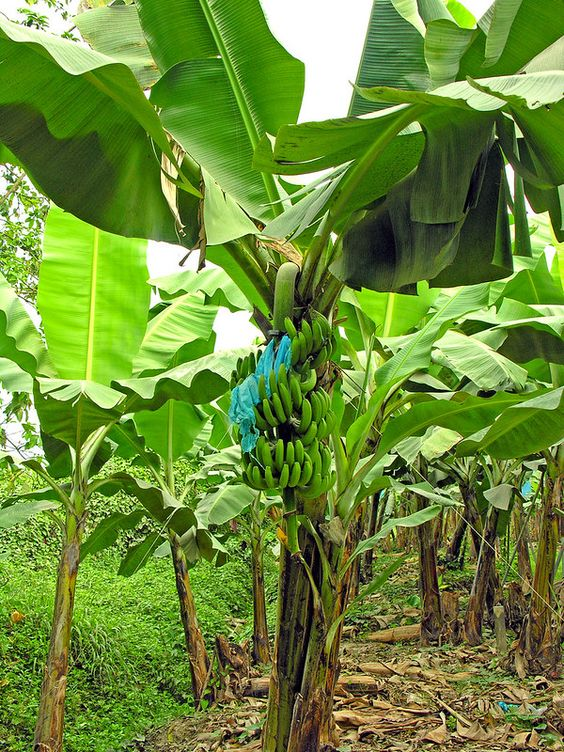
Source: Pinterest
Banana tree: Pests and diseases
Banana tree owners should be aware of potential pests and diseases that can harm their plants. Common pests include aphid insects, which cause curled and shrivelled foliage and can transmit diseases to the fruit. If you notice jelly-like sap oozing from the plant, it may indicate the presence of black weevils, which can be controlled using pesticides. Nematodes are another prevalent pest that can lead to rotting of the plant and fruit. Sap-sucking insects, such as small white mealybugs and red spider mites, can also affect banana trees. Additionally, scarring beetles have the potential to invade fruit bunches.
Banana tree: Benefits
Banana trees have a lot of benefits. From fruits to leaves, all have good ranges of benefits. Here we have mentioned the benefits of a banana tree.
Edible fruit
The banana fruit is the most well-known component of this tree. We eat fruit for various purposes. This fruit is a good source of carbohydrates, potassium, and other vitamins. It is used in baking, cooking, or even in desserts.
Banana flour
Those who want to get gluten-free flour can easily use banana flour. It is made from sun-dried bananas. Green bananas are used to get highly nutritional banana flour.
Banana peels
Banana peels are suitable for animals like cows, goats, etc. Livestock firms use peels for the nutrition of those animals. Also, the peel is ideal for whitening teeth.
Stem
Banana stem is a good source of fibre. It also controls blood sugar levels. The iron in the stem helps get a good haemoglobin level.
Banana leaves
Banana leaves are used as a natural plate for food. Also, the leaves are used for baking, steaming, and garnishing purposes. In the southern part of India, banana leaves have been used to serve food.
Banana flowers
Banana flowers are a rich source of iron. It also has fibres that help improve the human body’s digestive system.
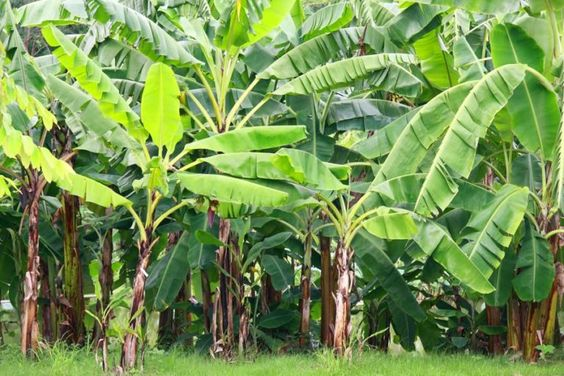
Source: Pinterest
Banana tree: Toxicity
No, banana trees are not toxic at all to either humans or pets. It is safe to grow in your home garden.
FAQs
What are the major benefits of bananas?
Bananas are good for heart health, weight control, immunity increase, etc.
Where were bananas first grown?
Banana was originally grown in tropical regions like India, China, Africa, etc.
How can I use banana leaves?
Banana leaves are used for baking, steaming, grilling, easy packaging, and as food plates.
Is banana leaf eaten directly by humans?
No, the leaves of a banana tree are not eaten directly, but you can use the leaves for other purposes.
Housing News Desk is the news desk of leading online real estate portal, Housing.com. Housing News Desk focuses on a variety of topics such as real estate laws, taxes, current news, property trends, home loans, rentals, décor, green homes, home improvement, etc. The main objective of the news desk, is to cover the real estate sector from the perspective of providing information that is useful to the end-user.
Facebook: https://www.facebook.com/housing.com/
Twitter: https://twitter.com/Housing
Email: [email protected]

